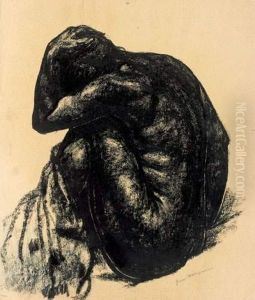Georges Dorignac Paintings
Georges Dorignac was a French artist known for his powerful and expressive drawings, as well as his paintings. Born on March 24, 1879, in Bordeaux, France, he moved to Paris to pursue his artistic career. In the early years of the 20th century, Paris was the epicenter of the art world, attracting many young artists eager to absorb the creative atmosphere of the city and its avant-garde movements.
Dorignac initially enrolled at the École des Beaux-Arts in Bordeaux before continuing his studies at the École des Beaux-Arts in Paris. There, he was influenced by the academic tradition, which emphasized classical drawing techniques and the study of the human form. Early in his career, Dorignac was associated with the Nabis, a group of post-impressionist artists that included Pierre Bonnard and Édouard Vuillard. However, his style evolved to become more distinct and individualistic.
By 1912, Dorignac had developed a unique style characterized by the use of heavy, sculptural lines and a focus on the human figure, often depicting laborers, women, and nudes. His drawings from this period are particularly striking, executed with black Conté crayon on paper, and are noted for their intensity and emotional depth. These works reflect a fascination with the materiality of the human body and a profound sense of empathy for the human condition.
During World War I, Dorignac's work was interrupted, and he served in the French army. After the war, he returned to his artistic pursuits, but his style shifted slightly as he began to incorporate more color into his work, and his drawings became less intense, though they retained their focus on the human figure.
Unfortunately, Georges Dorignac's life was cut short when he died on June 7, 1925, at the age of 46. Despite his relatively brief career, he left behind a body of work that continues to be appreciated for its emotional power and technical mastery. His art has been exhibited in various galleries and museums, and although he never achieved the same level of fame as some of his contemporaries, his contribution to the development of modern art in the early 20th century is recognized by art historians and collectors.



